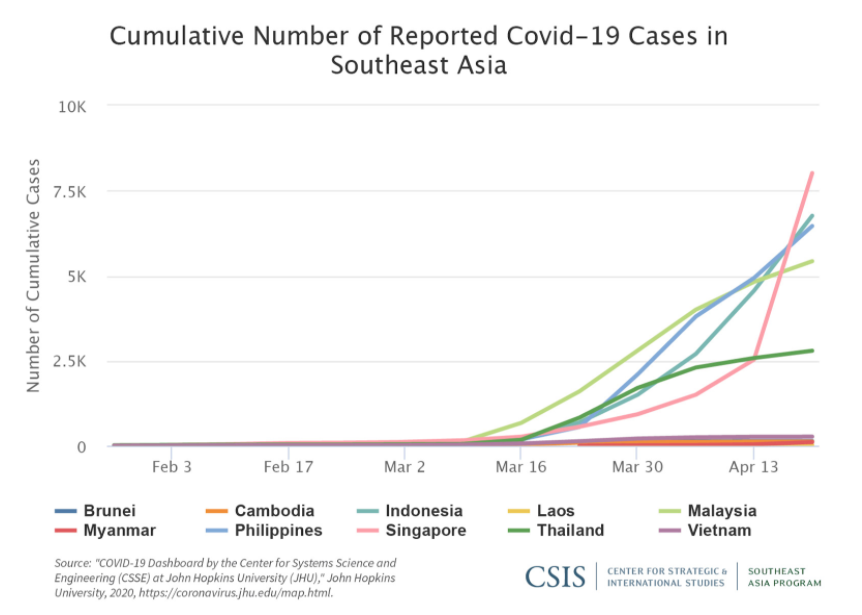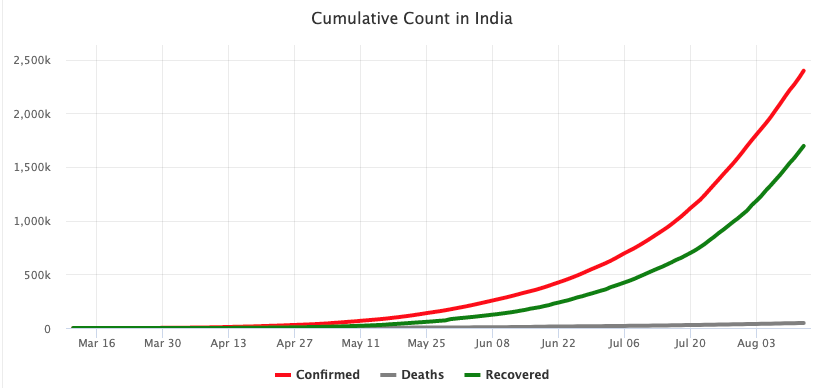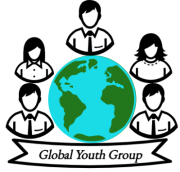COVID-19 Pandemic - Asia


BY: AAYUSH BHATT & ROHAN VIVEK
The following article is a brief description of the current predicament faced in the Asian region of the world with regards to the current COVID-19 Pandemic. This editorial divides Asia into 2 sections when approaching the growing worldwide transmission of the coronavirus by focusing on Central, West, and East Asia in one portion and South and Southeast Asia in another section. All of the sources utilized to formulate this brief analysis have been referenced towards the end of the page.
Ever since the inception of the pandemic, many expected the densely populated Asian regions to be especially prone to the spread of COVID-19. This was heightened due to the proximity of this region to China and the number of countries in this region that possessed vulnerable health care systems that wouldn’t be able to keep up with the quickly spreading virus. With the start of this pandemic being in the Wuhan Wet Market place, the growing worldwide transmission of the coronavirus eventually traversed the region infecting many throughout this vast area. In addition to being a public health emergency, the virus has been affecting the economic and social worlds in the east and the west.
Hong Kong (SAR of China) was one of the initial cities hit by COVID-19. Since then, the government has declared work from home for all government officers, and many private sector companies started instituting precautions. The demand for masks, toilet paper, and other essential supplies had rapidly incremented. Hong Kong’s Financial Chief, Mr. Paul Chan Mo Po, has acknowledged that the economic impact of the coronavirus outbreak has been bigger than that of SARS in 2003. He has warned that the unemployment rate will continue to surge in the near future.
Transitioning from the evaluation of the predicament in East Asia, South and Southeast Asia initially experienced a characteristically slow spread of the virus. According to the World Health Organization, by April 21st, India, a country with a population of 1.3 billion people, reported 18,601 cases and 590 deaths. Additionally, Bangladesh, with a population of 163 million, reported 3,382 cases and 110 deaths, and Indonesia, which has a population of 270 million, reported 7,135 cases and 616 deaths, just to name a few. Though the cause for this relatively slow spread is still unknown, many attribute it to the tropical climate of the region and possible reporting errors. However, according to Poonam Khetrapal Singh, the Regional Director of WHO Southeast Asia, it is partially due to the early distancing measures and other preventative policies that were implemented by most of the countries in the region.
Different countries in the region took various approaches to combat the spread of the virus. Due to the disastrous effects of the SARS pandemic in Hong Kong, Singapore and Vietnam, they were among the first countries to respond to the initial outbreak of COVID-19. They immediately ceased all travel with China in February, started monitoring citizens, and isolating infected individuals. Singapore relied mainly on widespread testing and tools used to contact trace (identify who may have come into contact with an infected person). However, they overlooked shared dormitories where multiple foreign workers lived, resulting in a surge of cases in April. In contrast, Vietnam focused on social distancing and isolation by creating large scale quarantines in multiple provinces and closing non-essential businesses. Thailand was also quick to respond, and though it initially made a mediocre response due to its focus on tracking the spread of diseases and electronic surveillance, cases quickly began to decrease. On the other hand, Cambodia and the Philippines were much slower in responding to the virus, as they had close relations with China and their presidents initially disregarded the threat of the spread of the virus. Specifically, in the Philippines, after various contradictory government statements, it was finally announced that the city of Metro Manila and the island of Luzon would be quarantined, and police were deployed to enforce it. Similarly, due to Indonesia’s lack of concern for the need of social distancing and its focus on preserving the economy, it also accumulated one of the highest numbers of cases in the region. However, by the end of April, all South and Southeast Asian countries had some form of lockdown policy.
Despite the various measures implemented to prevent the spread of the virus across the region, the curve hasn’t completely been flattened in most of the countries. Underprivileged countries in South Asia like Nepal, Sri Lanka , Pakistan, and Bangladesh are struggling to keep their nation stable during the pandemic. India suffers poor discipline amongst their citizens during the lockdown. Disparity between rich and poor becomes evident as the rich live comfortable lives even during the lockdown however the poor even struggle to survive. With over 2 million cases, India is ranked third in the world for having most COVID-19 cases. However, India also has a reassuring recovery rate of 75%. With most of the Southeast Asian countries slated to open in the next month or two due to decreasing numbers of cases, strict regulations are still in place and some efforts to reopen have only led to a spike in cases. For instance, Nepal, Bhutan, the Maldives, and Sri Lanka are easing up on lockdown policies and many will reopen to tourists in the next month (given that these tourists take a COVID-19 test and follow certain protocols). However, in India, previous reopening efforts created spikes in cases, resulting in it having the third-highest number of cases in the world. This resulted in various states reinstating quarantine protocols, while some, like Delhi, chose to remain open.
When evaluating the growing impact of the COVID-19 pandemic on central Asia, Russia is also suffering the effects of the pandemic being placed fourth in terms of the number of cases with nearly 1 million cases. Russia does have hope to remedy and rectify the current situation as they have recently developed a new vaccine that could help calm down the coronavirus situation. In fact, to reassure the nation of the vaccine’s safety and effectiveness, the president of Russia gave the first dose of the vaccine to his own daughter.
Finally, apart from the widespread economic depression that was created, the pandemic may have adverse effects on the governmental processes of various Asian countries. Specifically, leaders have given themselves emergency powers to be able to create social distancing rules and dispel fake news. Thus, many worry that these powers may be used to take away civil liberties by censoring citizens and arresting political opponents. It may soon be possible, though, for a closure to this public health issue with the potential success of a vaccine discovered by Russia, despite the current disagreement regarding whether it is truly safe to use or not.
Image 1 Source: “COVID-19 Dashboard by the Center for Systems Science and Engineering CSSE at John Hopkins University (JHU),” John Hopkins University, 2020, https://coronavirus.jhu.edu/map.html
Image 2 Source: “COVID-19 Cumulative Cases in India”, https://timesofindia.indiatimes.com/coronavirus


References
- Cheng, L. (2020, March 22). Economic hit from Covid-19 worse than during Sars, says minister. Retrieved August 13, 2020, from https://www.scmp.com/news/hong-kong/hong-kong-economy/article/3076322/coronavirus-economic-impact-worse-during-sars
- Coronavirus in South Asia, June 2020: Cases in India, Bangladesh, and Pakistan Spike. (2020, May 3). Retrieved from https://www.cfr.org/blog/coronavirus-south-asia-june-2020-cases-india-bangladesh-and-pakistan-spike.
- Coronavirus: Russia calls international concern over vaccine ‘groundless’. (2020, August 12). Retrieved August 13, 2020, from https://www.bbc.com/news/world-europe-53751017
- Nations, U. (n.d.). United Nations working to flatten COVID-19 curve in Southeast Asia | United Nations. Retrieved from https://www.un.org/en/un-coronavirus-communications-team/united-nations-working-flatten-covid-19-curve-southeast-asia.
- Strengths and Vulnerabilities in Southeast Asia’s response to the Covid-19 Pandemic. (2020, June 5). Retrieved from https://www.csis.org/analysis/strengths-and-vulnerabilities-southeast-asias-response-covid-19-pandemic.
- TOI Coronavirus Live Tracker: How India is fighting coronavirus. Updates, myth-busters, tips and more. (n.d.). Retrieved August 13, 2020, from https://timesofindia.indiatimes.com/coronavirus
